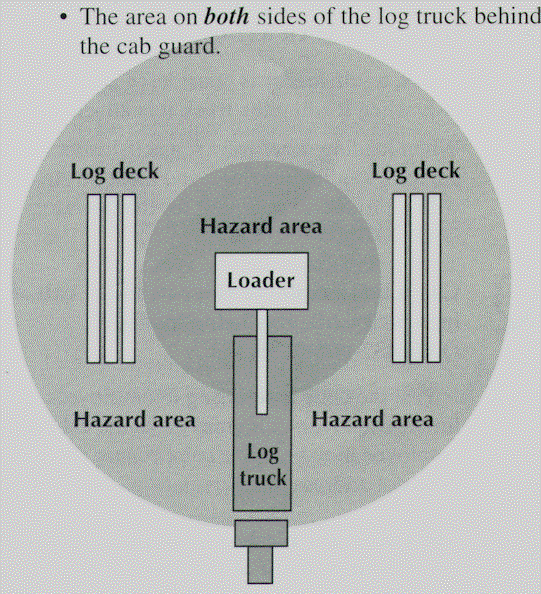Logging eTool
Manual Operations » Log Loading and Transporting

Highlights of Log Loading and Transporting Requirements
- Only the machine operator and other essential personnel are allowed in the loading area. If a transport vehicle operator is allowed to remain in the vehicle cab while logs are carried or moved over the cab, the vehicle operator must be protected from falling logs by an effective means.[1910.266(h)(6)(ii) and (iii)]
- Each tie down must be left in place over the peak log until the unloading lines or stakes are put in place, and tie downs must be released only from the side on which the unloading machine operates, unless the tie down is released by remote control or the employee making the release is protected by rack, stanchions or other effective devices. [1910.266(h)(6)(vii)]
- Each stake or chock used to trip loads must be activated from the side opposite the release of the load. [1910.266(h)(6)(vi)]
- The transport vehicle must be positioned to provide working clearance between the vehicle and the deck. [1910.266(h)(6)(i)]
- The load must be positioned to prevent slippage or loss during handling and transport.[1910.266(h)(6)(v)]
![]() Additional Information:
Additional Information:
- 29 CFR 1910 Subpart R, Special industries. OSHA Standard.
-
1910.266(h)(6), Loading and unloading
-
- Logging. OSHA Preamble to Final Rules, (1994).
- Logging Operations. OSHA Federal Register Final Rules 60:47022-47037 (September 8, 1995). Amends the logging operations standard. [See Paragraph (h)(6)(ii) -- Loading .]
- Logging Operations, Inspection Procedures and Interpretive Guidance Including Twelve Previously Stayed Provisions. OSHA Directive CPL 02-01-022 [CPL 2-1.22], (September 27, 1996). [See Definitions and clarifications: Paragraph (h) Tree Harvesting -- Paragraph (h)(3)(i) - Bucking and limbing -- Loading/Unloading of Trees.]
Examples of Loading




